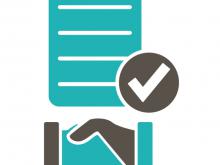Tips to get it right!
Strategic Environmental Assessment (SEA) can be a powerful tool to enhance the contributions of a national or sectoral policy or strategy (strategic document) towards environmentally sustainable, climate resilient and low carbon development.
SEA was first piloted in EU development cooperation in 2006. Since then, more than 40 SEAs have been prepared. But what are the lessons drawn from applying the SEA over the past 10 years?
DEVCO’s Environment and Climate Change Mainstreaming Facility (ECCM) will be issuing a booklet with tips for a performing a successful SEA. We should keep in mind that there are different approaches to SEA.
The approach promoted by DG DEVCO:
- Aims at ensuring that EU support to the implementation of national/sectoral policies and strategies maximises opportunities to contribute to an environmentally sustainable, climate resilient and low carbon development.
- Informs the EU to enhance its support programme, but also the partner government to enhance its policy or strategy.
- Just as more traditional SEAs, it analyses the potential impacts on the environment expected from implementing the relevant strategic document. However, in DEVCO’s approach, SEA should also provide an answer to the following questions:
- Does the strategic document offer an adequate response to the effects of environmental degradation and climate change on the sector’s performance?
- Does the strategic document make use of opportunities to contribute to environmentally sustainable, climate resilient and low carbon development?
|
|
Tip 1: Be clear on whether you need an SEA
- SEA is encouraged when the EU will be providing budget support to implement a national or sectoral strategy, or when providing other significant strategic level support to environmentally sensitive sectors agriculture and rural development, energy, water & sanitation, transport, infrastructure, and private sector development.
- A screening procedure (see the Guidelines on ‘Integrating the environment and climate change into EU international cooperation and development’) helps to decide on whether it is appropriate to prepare an SEA.
|
|
|
Tip 2: Put the government in the driving seat and get the timing right
- The best way to guarantee the environmental sustainability and climate resilience of the strategic document is for these issues to form part of the planning process from the start, and be promoted by the government.
- The EU should ideally support a government-led SEA process, although often SEAs are promoted by the EU. In any case, the government must have a high degree of ownership.
- Approach the government at an early stage to promote the SEA and jointly define its scope. Prepare the SEA Terms of Reference (ToR) jointly with your government counterparts!
- In some instances, it may be useful to organise a training workshop on SEA, targeting government partners and EU staff that will be involved in the process.
- Keep in mind that even in cases where the SEA comes late in the planning process, it can nevertheless still make an important contribution.
|
|
|
Tip 3: Coordinate with other donors
- Donors have their own SEA requirements and a sector may be receiving support from various donors. Therefore, support the government in coordinating with other donors active in the sector; engage them; make sure the SEA will be beneficial to everyone.
|
|
The scope of the SEA for Rwanda’s agriculture strategy was agreed with the government as well as other donors active in the sector. One of the objectives was that the SEA would be a single exercise satisfying the needs of the government and key donors in the sector.
|
|
|
Tip 4: Be clear on what you expect from the SEA; get the ToR right
- The EU environmental mainstreaming guidelines provide indicative ToR for an SEA, but these need to be adapted to the country, and sector-specific context.
- Be realistic about what is being required. Don’t expect the SEA to cover everything; focus on what is most important.
|
|
|
Tip 5: Remember that climate change can get in the way of development
- SEA informs strategic planning processes, which, almost by definition, look to the medium and long-term, a time scale where we expect impacts of climate change to be felt.
- The SEA should examine how climate change affects the feasibility of the sector strategy and provide recommendations to build its climate resilience. It can also look for opportunities to contribute to low carbon development.
|
|
A key recommendation of the SEA for Guyana’s sugar sector strategy was the upgrading of the drainage system to future rainfall patterns expected under climate change, rather than to current patterns as originally foreseen.
|
|
|
Tip 6: Give due attention to the scoping phase
- Scoping is a critical phase in an SEA. There are multiple interactions between the environment, climate change and sector development; however, the SEA should not attempt to address them all, spreading too thinly. Attention should be given to the issues that represent opportunities to significantly enhance the sector’s environmental performance.
- The SEA should consist of two distinct phases: scoping and the SEA study proper. Sufficient buffer time should be allowed between the scoping phase and the SEA study phase to allow key stakeholders to provide comments.
- As far as possible, allow flexibility for the reallocation of resources based on the findings of the scoping phase. Keep in mind that different types of expertise than those originally foreseen may be required, as well as a different distribution of time allocation amongst experts.
|
|
|
Tip 7: Ensure transparency and broad participation
- Transparency and public participation are key principles of an SEA process. Consultations should be encouraged and opportunities for public participation provided, including making reports publicly available.
- The scoping phase should be participatory, and its findings validated by key stakeholders, preferably through workshops. SEA workshops have added value beyond their consultation objectives, they help strengthen networking and inter-institutional coordination among different actors working with environment or climate change issues relevant to the sector.
- Transparency of the process also allows broader communication that can feed national debates on issues of public interest. The generation of debate on the environmental dimension of sector strategies is often a key contribution of SEAs.
- Innovative ways to engage stakeholders can be conducive to more fruitful debate!
|
|
In Mauritius, various thematic workshops were carried out to define the scope of the SEA for the sugar sector adaptation strategy. Workshops allowed key environmental issues to be narrowed down and sensible safeguards identified.
In Zambia, press articles on the SEA results contributed to national debate on the sector.foreseen.
|
|
|
Tip 8: Ensure recommendations are focused and appropriately discussed
- A key responsibility of the partner government and EU Delegation staff managing the SEA is to ensure that recommendations of the SEA are focused, relevant and realistic. They should be kept at a strategic level, avoiding temptation to analyse potential impacts of individual interventions in detail.
- Recommendations should be prioritised, clearly indicating to whom they are addressed.
- In some occasions the best solution to an environmental issue lies in the hands of an authority other than the sectoral authority leading the SEA process. In such cases, appropriate communication channels should be identified, where policy dialogue can play an important role.
- Adequate fora should be identified to discuss the findings with the relevant authorities and decide how recommendations will be taken forward. This refers to discussions both within the partner government and the EU Delegation itself.
|
|
|
Tip 9: Think strategically! If possible, promote a national SEA system
- The most effective way for SEA to influence national policy-making and planning processes is when these are promoted by the Government itself, guaranteeing ownership and a better timing of the SEA vis-à-vis the planning process.
- The EU can seek opportunities to promote the development of national SEA systems and strengthening capacities.
|
|
The EU supported the development of the national SEA system in Chile, which included the preparation of two pilot SEAs and the development of capacities.
|
Where to get more support?










Log in with your EU Login account to post or comment on the platform.